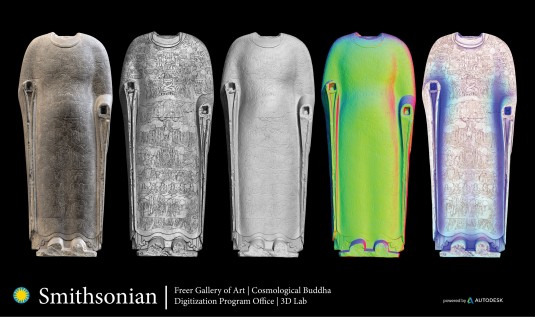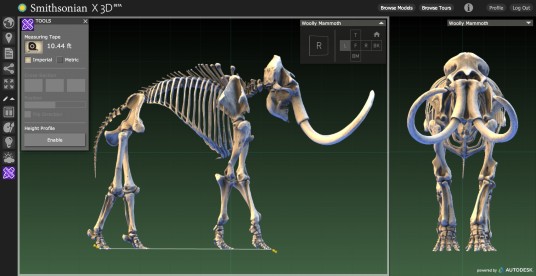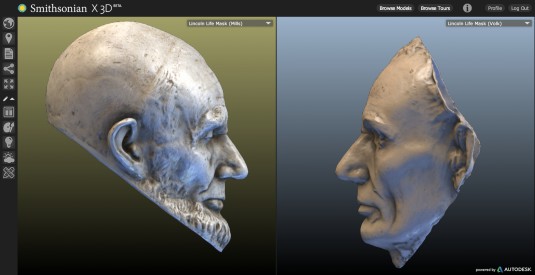Custom educational tool gives general public virtual access to rare artifacts and specimens.
The Smithsonian today launches its new Smithsonian x3D Explorer, an interactive 3D-enabled website. Autodesk built the underlying technology exclusively for the Smithsonian to “democratize access” to prized specimens and artifacts. Many irreplaceable objects from the Smithsonian’s vast collection have been digitized, allowing both “behind the glass” views and the possibility of holding 3D printed replicas.

The Smithsonian says it is eager to embrace 3D technology and wants to be in the forefront as it transforms the museum experience. “Capturing digital 3D models of our vast and complex collections of artifacts is a major priority,” said Gunter Waibel, head of the Smithsonian Digitization Program Office. “We can now share our collections with more people than we could ever reach before. It is our hope that the Smithsonian x3D Explorer will enhance education and research in ways we haven’t even imagined.”
Less than 1% of the Smithsonian’s collection is on display at any time, and some objects in their collection will never be on display. The ability to showcase objects digitally opens up new education and exploration. In years past, much of the organization’s “flat” objects such as photos or documents have been digitized, but most Smithsonian collections are of three-dimensional objects. Autodesk worked with the Smithsonian to create an entire web experience: a museum online complete with a gallery, guided tours, research data, and a 3D object explorer. The x3D Explorer launches with 3D models of 21 representative objects from its collection.

Many of the 3D models are available to download for personal and educational use, including the ability to produce physical objects using 3D printing. For example, classrooms around the globe can now work with educational replicas of these artifacts, and hopefully encourage further interest students to explore the vast collections of science, technology, engineering and anthropology available from the Smithsonian.
The Smithsonian Digitization Program Office is chartered with digitizing as much of the Smithsonian’s collections as possible, and the scale of the collection presents a significant challenge. The office used Autodesk ReCap and Autodesk Maya to capture artifacts with photos and turn them into detailed 3D models that can be viewed on the x3D Explorer website.






